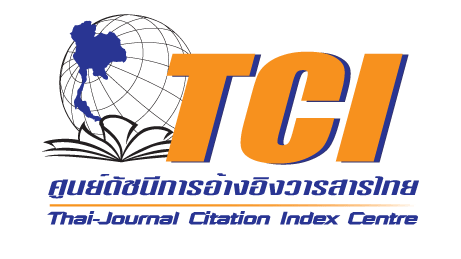The Rate of Return to Driving after Traumatic Brain Injury in Malaysia and the Changes in Driving Behaviour
Keywords:
driving, rehabilitation, traumatic brain injury, vehicleAbstract
Objectives: To examine the rate of return to driving among patients with traumatic brain injury (TBI) in Malaysia and its associated factors; and to identify the changes in their driving behavioural pattern.
Study design: A cross sectional study.
Setting: A tertiary hospital in an urban setting in Malaysia.
Subjects: TBI patients of more than six months duration with valid driving licenses, driving cars and/or riding motorcycles prior to the TBI and attended the outpatient clinic follow-up from December 2019 to June 2020
Methods: Personal and medical data were collected via face-to-face interview using a structured questionnaire and from the electronic medical record, respectively.
Results: A total of 52 patients were interviewed with the average age of 39.4 (12.7) years. The commonest cause of TBI was motor vehicle accident (MVA) (86.5%) with almost half (46.1%) of the patients returned to driving post-TBI within the range of 6 months to 17 years. Majority of the post-TBI drivers (70.8%) underwent a formal driver retraining program. This study found that both the cognitive status (p < 0.05, d= 0.1) and the functional status (p < 0.05, d = 0.1) were significantly associated with return to driving. Changes in driving behavioural pattern were reported in 70.8% of the drivers.
Conclusions: The rate of return to driving among patients with TBI is low. Hence there is a need to address the underlying barriers to return to drive in a comprehensive driving rehabilitation program post-TBI.
Keywords: driving, rehabilitation, traumatic brain injury, vehicle
References
Sander AM , Kreutzer JS, Rosenthal M, Delmonico R, Young ME. A multicenter longitudinal investigation of return to work and community integration following traumatic brain injury. J Head Trauma Rehabil. 1996;11:70-84
Rapport LJ, Hanks RA, Bryer RC. Barriers to driving and community integration after traumatic brain injury. J Head Trauma Rehabil. 2006;21:34-44.
Schultheis MT, Matheis RJ, Nead R, DeLuca J. Driving behaviors following brain injury: self-report and motor vehicle records. J Head Trauma Rehabil. 2002;17:38-47.
Borhan MN, Hakimi Ibrahim AN, Syamsunur D, Rahmat RA. Why public bus is a less attractive mode of transport: a case study of Putrajaya, Malaysia. Period Polytech Transport Eng. 2019;47:82-90.
Jeffrey H. Transportation in Malaysia, Facts and Details. 2008. [cited 2020 Nov 21]. Available from http://factsanddetails.com/southeast-asia/Malaysia/sub5_4d/entry-3689.html
Percival HP, Brian MK, Joseph EH. Classification and complications of traumatic brain injury, medscape. 2020. [cited 2020 Nov 1] Available from https://emedicine.medscape.com/article/326643-overview
Ministry of Health Malaysia. Medical examination standards for disabled driver’s licensing. Medical Examination Standard. 2011;1-33.
Mazlan M. Traumatic brain injury. In: Cifu DX, Lew HL, editors. Braddom’s rehabilitation care: a clinical handbook. Philadelphia: Elsevier; 2018. p. 305-14.e35.
Kashluba S, Hanks RA, Casey JE, Millis SR. Neuropsychologic and functional outcome after complicated mild traumatic brain injury. Arch Phys Med Rehabil. 2008;89:904-11.
Fisk GD, Schneider JJ, Novack TA. Driving following traumatic brain injury: prevalence, exposure, advice and evaluations. Brain Inj. 1998;12:683-95.
Hawley CA. Return to driving after head injury. J Neurol Neurosurg Psychiatry. 2001;70:761-6.
Cullen N, Krakowski A, Taggart C. Functional independence measure at rehabilitation admission as a predictor of return to driving after traumatic brain injury. Brain Inj. 2014;28:189-95.
McKerral M, Moreno A, Delhomme P, Gélinas I. Driving behaviors 2-3 years after traumatic brain injury rehabilitation: a multicenter case-control study. Front Neurol. 2019;10:144.
Novack TA, Labbe D, Grote M, Carlson N, Sherer M, Carlos Arango-Lasprilla J, et al. Return to driving within 5 years of moderate-severe traumatic brain injury. Brain Inj. 2010; 24:464-71.
Leon-Carrion J, Dominguez-Morales MR, Barroso y Martin JM. Driving with cognitive deficits: neurorehabilitation and legal measures are needed for driving again after severe traumatic brain injury. Brain Inj. 2005;19:213-9.
D’apolito AC, Massonneau A, Paillat C, Azouvi P. Impact of brain injury on driving skills. Ann Phys Rehabil Med. 2013;56:63–80.
Coleman RD, Rapport LJ, Ergh TC, Hanks RA, Ricker JH, Millis SR. Predictors of driving outcome after traumatic brain injury. Arch Phys Med Rehabil. 2002;83:1415-22.
Schanke AK, Rike PO, Mølmen A, Østen PE. Driving behaviour after brain injury: a follow-up of accident rate and driving patterns 6-9 years post-injury. J Rehabil Med. 2008;40:733–6.
Kontogiannis T, Kossiavelou Z, Marmaras N. Self-reports of aberrant behaviour on the roads: error and violations in sample of Greek drivers. Accid Anal Prev. 2002;34:381-99.
Rosli NS, Mohd Yunus J, Hanan SA. Testing The Driving Behavior Questionnaire (DBQ) on Malaysian drivers. 2017. In the proceed¬ing of the 12th Malaysian Universities Transport Research Forum Conference (MUTRFC 2017) In Conjunction With 4th Agkn on Tour 15, 10-12 Oct 2017; Selangor, Malaysia.
Rowland B, Davey J, Freeman J, Wishart D. Implementation of a driving intervention to reduce aberrant driving behaviours. 2009. Proceedings of the 5th International driving symposium on human factors in driver assessment, training and vehicle design, 22-25 June; Big Sky, MT. 2009; 447-53.
Downloads
Published
How to Cite
Issue
Section
License
Copyright (c) 2021 ASEAN Journal of Rehabilitation Medicine

This work is licensed under a Creative Commons Attribution-NonCommercial-NoDerivatives 4.0 International License.






